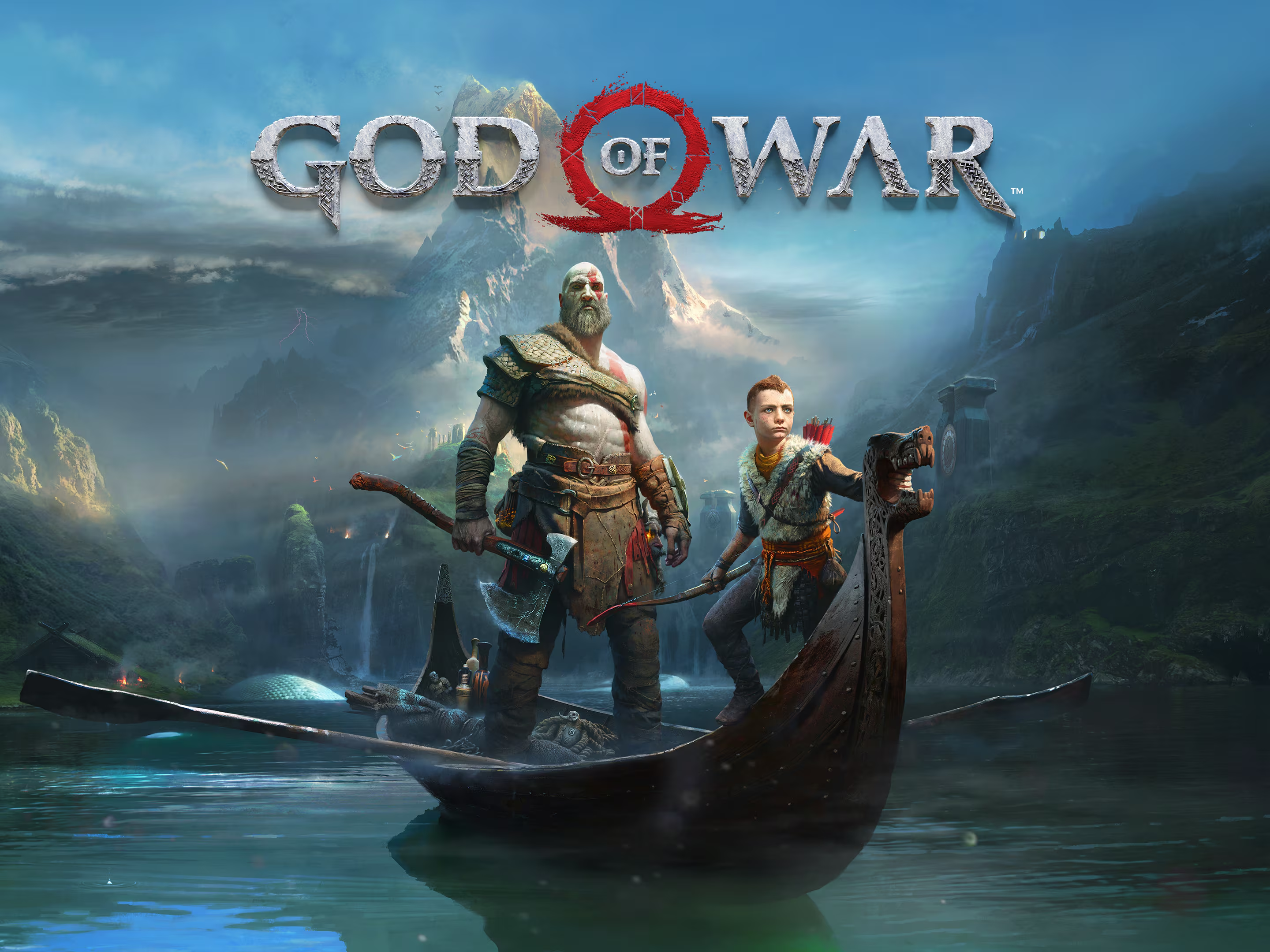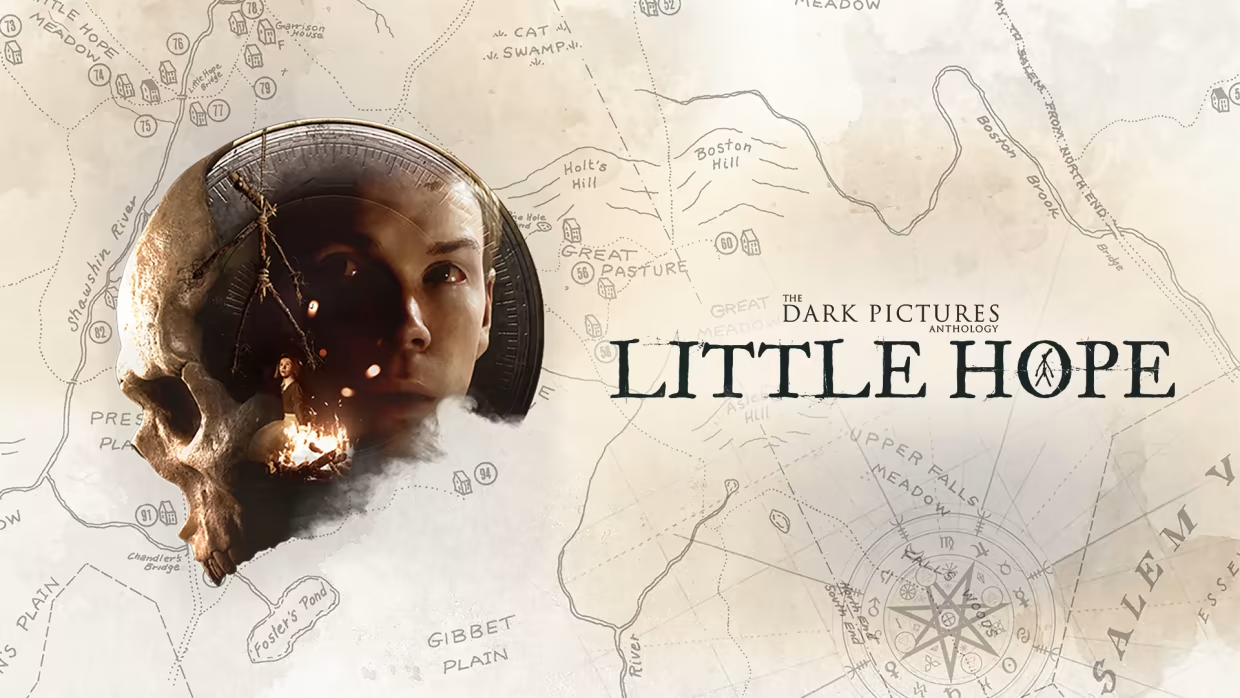Pokémon Legends: Arceus
Pokémon Legends: Arceus feels like a promising prototype for what could be a terrific finished game one day. It shakes up the stagnated Pokémon formula but just that, presenting many great ideas but failing to fully develop any of them.
Arceus is an Isekai, the type of story where the protagonist is thrown into a strange, alien world they know nothing about. Here, it starts with the divine being Arceus – Pokémon‘s equivalent to God – speaking with them in a dark void. God asks about our appearance, mods our cell phone, and throws the main character into a beach, where we meet a professor called Laventon, who just witnessed them drop from a rift in the sky. When we find our phone again, God sends a text message, giving us the main goal: “I bestow upon thee this Arc Phone and thy mission: seek out all Pokémon.”
Soon, we discover that the protagonist has been transported back to an age when Poké Balls have just been invented and people still fear Pokémon. After we prove ourselves capable of handling Poké Balls – apparently catching just three Pokémon is considered a heroic feat here –, Laventon proposes a partnership and invites the main character to Jubilife Village, where they accept a full-time job – even though they are just 15 years old.
First, the Isekai element is not given too much thought, it’s supposed to be a mirror to the player’s situation and nothing more than that – it’s not even clear if the main character really came from the future or from another world altogether. People in the village may comment on their appearance (“What manner of dress is that?”), but speak the protagonist’s language without explanation. Sometimes, people will worry about the main character becoming stranded in that time – or world – forever, but the game has a silent protagonist, so they never give any input on the subject.
Sometimes, Arceus presents us with dialogue options, but rarely in situations that matter. The choice is usually a fake one, too: if we decide not to battle someone, for example, they will just keep challenging us until we accept. A game that offers choice should always acknowledge it: with dialogue choices, maybe make characters always react to them and offer more than just interchangeable responses that have no real consequence.
These choices could have been used to allow us to develop the main character, giving us the means to decide how the protagonist feels about being in that world – or time –, making full use of the Isekai theme: we could have decided if they want to go back or not, how conflicted they are about it, how lost and out of place they are feeling in Jubilife.
After all, the protagonist doesn’t receive a warm welcome when they first arrive in the village. These people are struggling to make ends meet and so see us as one more mouth to feed: “We’ve no food for freeloaders. Survival out here is a daily battle, you know,” a woman warns the protagonist. Since Cyllene, one of the leaders of the Galaxy Expedition Team – the organization that rules Jubilife –, believes that a 15-year-old kid is old enough to earn their keep, we are offered a job in the Survey Corps, tasked to capture and research Pokémon. The Galaxy Team will provide food and shelter but first, we must prove ourselves in a trial or… die: “You will be expelled from the village to meet your fate – and perhaps your death – in the wilds,” Cyllene warns us about the price of failure.
People in Jubilife are deeply afraid of Pokémon. A woman named Berra tells us she got traumatized after an attack in the wilds and now is too scared to set foot out of the village. A guard at the gates urges us not to leave Jubilife, as it is too dangerous, and Laventon is even more blunt: “Pokémon are terrifying creatures!” he says. This sentence quickly becomes a mantra, being repeated verbatim by several characters throughout the game.
Arceus tries to build on this theme, but never goes too far: it keeps telling us that Pokémon are terrifying creatures because it’s too afraid to show us. One of the first sidequests is about a Drifloon playing with a kid and how this is a dangerous idea. Its Pokédex entry says, “Said to lure away young children and carry them off to the afterlife. Some whisper that Drifloon are formed of reincarnated human souls, but these rumors are as yet unconfirmed,” so we can understand why adults are worried: Drifloons indeed seem terrifying creatures… on paper. After all, the quest ends up being about a kid befriending one without any issue. The game, then, only goes halfway: despite all its talk, any actual interaction between an NPC in Jubilife and a Pokémon is a positive one (possibly because this is a series that targets children and has toys to sell). In other words, Arceus tries to build a theme it can’t fully commit to.
But at least it tries in some areas. When a Pokémon evolves, they turn into a dark shape with bright eyes for some seconds, which can be a fearsome sight. Wild Pokémon can now hit the main character as well, not just their Pokémon: boss battles focus on this change, putting the protagonist against a mighty enraged Pokémon, having to dodge their attacks while throwing balms to calm them down.
The point in Arceus, however, is not Pokémon battles, but filling out the Pokédex. There are no Gyms, no trainer battles in the wilds, and no League at the end: fights that evolve people’s Pokémon are always scripted story events. The goal here is to capture a lot of – the same – Pokémon, and battles are supposed to just be another way to understand these creatures better.
Therefore, the big change in Arceus is that capturing a Pokémon is not just easier but also seamless, as we don’t need to enter a battle with them anymore: we just need to spot a Pokémon in the wild and throw a Poké Ball at them. If the ball hits their back, the chances of capture even increase, encouraging a stealth approach – here, it’s just the usual “crouch to be less noticeable” tactic. It’s such an easy and simple process that scenes where the protagonist is praised for capturing just three Pokémon become quite silly, making us question if everyone in Jubilife needs glasses.
Each entry in the Pokédex offers many tasks: catch many of the same Pokémon, catch them unnoticed or while at night, see them use a certain move or evolve, give food to them, and so forth. Each of these requirements earns points and when we get ten, the entry is complete, taking us one step closer to increasing our rank in the Galaxy Team, which allows the use of high-level Pokémon and items. This means that the game has a simple gameplay loop that works: we venture into the wild, spot a Pokémon, throw Poké Balls at it or battle it, earn points in the process, go up in rank, receive better Poké Balls, and repeat the process with new Pokémon.
Since fighting is not the point, battles are quicker, too, with moves dealing much more damage than usual. This has a great effect on the feel of the game, as it means that battles can be more of a challenge now: a wild Pokémon that hits a super-effective move will probably one-shot a member of the player’s party. This successfully leans into the “Pokémon are terrifying” theme, and the game even has some bigger, red-eyed Pokémon in the wilds – called Alpha – that are high-level and capable of wiping our entire team if we come unprepared.
The only problem with this loop is that catching a Ponyta and catching a Drifloon is basically the same experience, as we just need to go behind them and throw a Poké Ball. There’s no evolution in the mechanic after the first hours – when we get the three types of Poké Ball – since better ones just increase chances of capture, and there are no surprises in store. Some Pokémon are rarer than others, of course, and some are affected by the time of day – Ghost Pokémon will appear at night, for example – but after spotting one, it’s business as usual.
Some Pokémon are aggressive and try to attack the protagonist after spotting them, but we can just run for a few seconds in the opposite direction, wait for a bit, and return to try again. In other words, the game can get repetitive, especially after the dopamine rush caused by the jingle sound of a successful Poké Ball throw starts to lose its effect.
The Pokédex should have been more developed, too. If the whole point of the game is filling it, completing each of the many tasks for a Pokémon entry should give us more than three lines of text and a list of their favorite foods – Breath of the Wild had more detailed text descriptions in its Monster Compendium and most players don’t even remember the thing exists.
Arceus also suffers from a repetitive overall structure. It has several big areas to explore and each one has a “Lord” Pokémon that needs to be “quelled” with the balms. Each area has its self-contained story to get to this Lord, but to call them shallow would be an understatement. The stand out is the one in the coastal area that has a Growlithe finding the courage to take his late father’s place as Lord… and it’s still quite basic, but there’s at least a bit of character development and even a forbidden love story thrown into the mix. Most stories in Arceus, however, just follow the same template of “I either don’t trust you, or think you’re wrong, but if you win me in battle or bring me an item you can proceed anyway,” which gets old very fast – especially since Arceus has a lot of cutscenes and dialogue.
Finally, there’s the matter of presentation. Pokémon is one of the hugest franchises in the world and yet Arceus looks like a low-budget project. There’s this early moment when we leave the village and go to the first wild area and the camera tries to emulate that famous Breath of the Wild pan that makes us gaze at the environment and go “wow”, but the area is so lacking in elements and artistic flair that it ends up having the opposite effect, looking deeply embarrassing. This is an ugly game, and it’s not just about lackluster textures – although they are indeed poor – but that the artistic design of the environments is also bland and uninspired: there are few landmarks, few places that stand out because of their layout or visual elements, few places that boast a unique design. There’s no need to compare its polish with a modern behemoth like Breath of the Wild: Xenoblade Chronicles has much more detailed and imaginative 3D biomes than Arceus and it’s a game that came out for the Nintendo Wii in 2010.
If Pokémon Legends: Arceus feels like a prototype it is because it makes sure that the core gameplay loop works but refuses to go beyond that. It’s a step in the right direction, for sure, but remains just a promise of a better future for Pokémon instead of already fully realizing its vision.
May 25, 2023.
Game Freak
Kazumasa Iwao
Toshinobu Matsumiya
Go Ichinose, Hitomi Sato, and Hiromitsu Maeba
30 hours
Switch


























It's pokemon, so we know what to expect, so we can totally skip this one
We can't skip this one fast enough
It’s like if someone tried to make a game on rpg maker, but used the pipeline of Crytek!